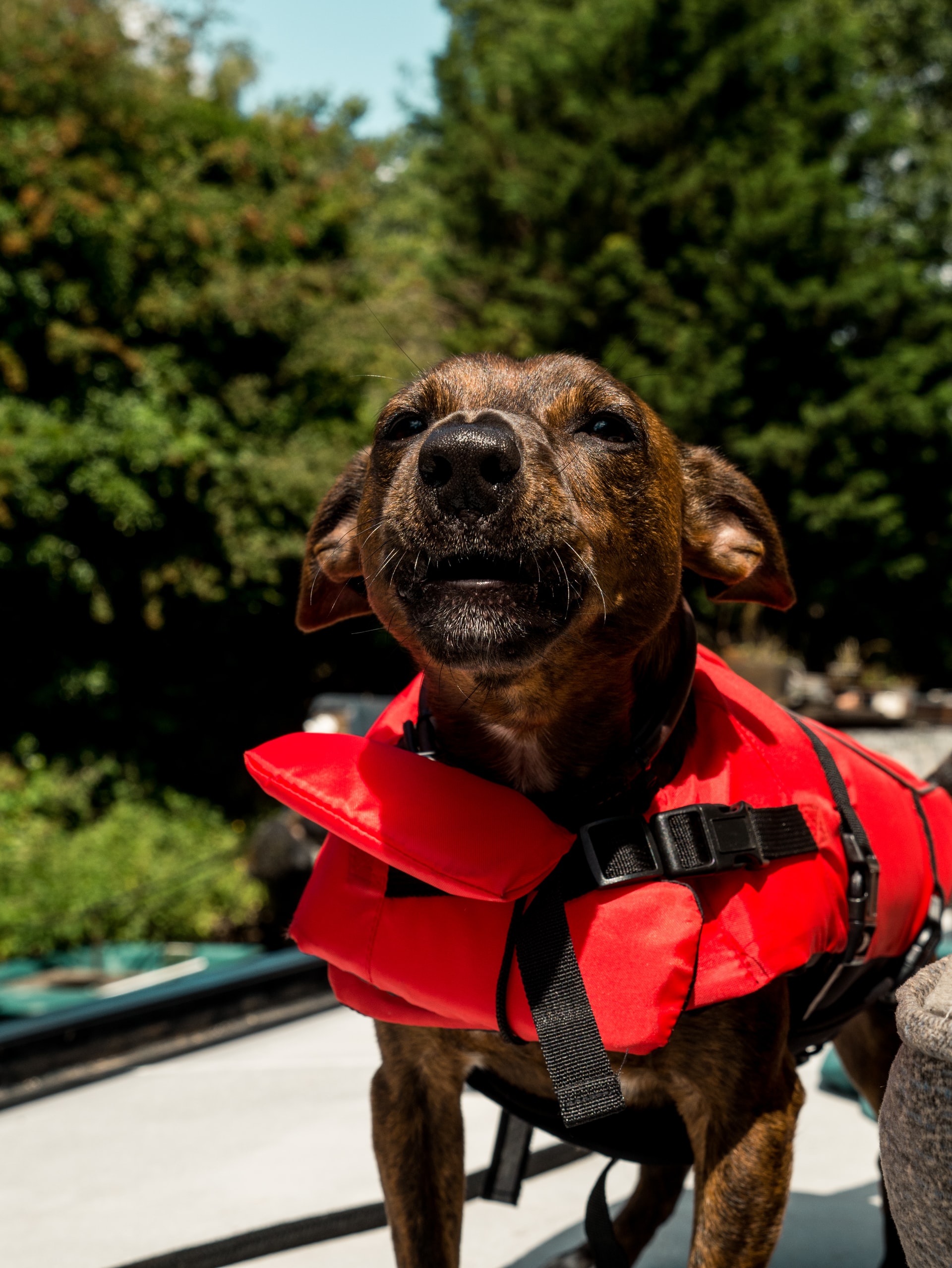How to fit your dog for a lifejacket
by Ontario SPCA and Humane Society | Dog Care | May 13, 2024

Summer is almost here, which means it’s time to enjoy water activities again! Our friends at Ren’s Pets want to ensure you’re ready for the warmer weather. If you’re planning on enjoying the water with your dog, invest in a life-jacket. Even good swimmers can tire easily in rough water and will benefit from a life vest to help keep them safe.
“Life jackets not only keep your pet afloat if they fall overboard, they can also help protect against hypothermia in cold water and can also make it easier to pull your dog back onboard,” says Bonnie Bishop, Ontario SPCA and Humane Society Eastern Regional Manager. “Even if you’re near shore, the shoreline may be slippery or too steep to climb up.”
Learning how to properly fit your dog for a life-jacket ensures they are safe when enjoying the water.
Some key things to consider
- Size and weight: Every brand will have measurements and weight ranges associated with the dog it will fit. Take your dog’s measurements (chest circumference and torso length). The fit should be snug but allow your dog to move comfortably without the life-jacket rubbing against their skin.
- Buoyancy: Life vests can be made to have floatation support in various locations surrounding your dog, including the side, back and belly, with some that have floatation support under the neck to assist in keeping the dog’s head above the water.
- Attachments: Life-jackets have easy-access clips for leashes to be attached and handles for you to grab and lift the dog should they fall overboard
- Colour: Most life-jackets are bright, and some have reflective components to increase the visibility of your dog. If you are boating at night, it’s a good idea to purchase a light attachment that can be placed on the vest or collar of your dog.
You should be aware of your dog’s swimming capabilities prior to engaging in any water activities, such as boating. Ensure your dog feels comfortable around the water and provide them with a properly fitted life-jacket to help prevent injuries and keep everyone safe this summer. With these tips in mind, you can get outside and enjoy the beautiful weather with your furry friend!
“When determining whether to bring your dog along on boat trips, you’ll need to consider their safety and plan accordingly,” says Bonnie. “A life jacket could save their life.”
Check out our blog 10 tips to keep your pet safe when boating for additional considerations when heading out on the water with your furry friend this summer.
Ready to take the plunge and invest in your pet’s safety? Ren’s Pets has all the essential items needed to ensure your pet is summer ready! Visit their website today!
Categories
Testimonial
Thank you so much for all you do
Thank you so much for all you do every day to rescue animals in need. I can’t imagine the terrible situations that you see every day. It is great that you have the heart to help. Keep up the good work.
